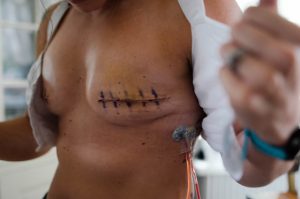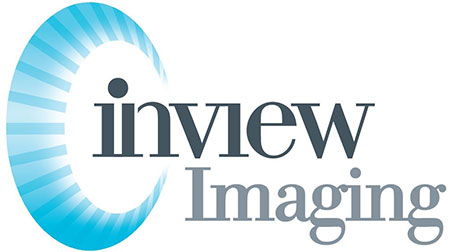Did you know that nearly 300,000 women undergo breast augmentation annually in the US? While breast implants enhance appearance, they can pose challenges during mammograms due to dense breasts affecting cancer visibility and imaging conditions. Understanding how implants impact screening accuracy is crucial for women’s health. Mammograms are essential for early detection of breast cancer, but the presence of implants can complicate readings for patients with dense breasts. This blog post delves into the relationship between breast implants and mammograms, offering insights on what women with implants should consider when scheduling screenings for cancer detection. Stay informed to make empowered decisions about your health.
Key Takeaways

-
Regular mammograms are crucial for early detection of breast cancer, regardless of having breast implants.
-
Inform your healthcare provider about your breast implants and cancer visibility before scheduling a mammogram to ensure proper technique, radiation dose, and interpretation.
-
Address concerns about implant rupture or displacement during a mammogram by choosing a facility experienced in performing mammograms on patients with implants.
-
Prepare for a mammogram by familiarizing yourself with the procedure, wearing comfortable clothing, and avoiding lotions or deodorants on the day of the screening to aid in breast cancer detection.
-
After a mammogram, follow up promptly on any abnormal findings with your healthcare provider for further evaluation and treatment if necessary.
-
Encourage friends and family, especially those with breast implants, to prioritize regular mammogram screenings for early detection and improved outcomes for breasts.
Understanding Mammograms
Basics and Importance
Regular mammograms are essential for women with breast implants to detect any abnormalities early and improve cancer visibility. Informing healthcare providers about the presence of implants is crucial for accurate readings in breast cancer detection during screening mammograms. Mammograms play a key role in detecting breast cancer in women with implants, aiding in timely treatment by ensuring quality visibility of breasts and minimizing dose.
In women with breast implants, mammograms help in identifying any changes in breast tissue that may indicate cancer. Early detection through mammograms can significantly improve the chances of successful treatment. Healthcare providers need to be aware of the presence of implants to ensure accurate readings.
Common Myths Debunked
e misconceptions exist regarding mammograms for women with breast implants, such as concerns about rupturing the implant during the procedure. However, modern techniques ensure the safety and effectiveness of mammograms even for women with implants. It’s important to debunk myths surrounding the risks and benefits of mammograms for women with breast implants and standard breasts.
-
Myth: Mammograms can cause implant rupture.
-
Fact: Proper techniques are used to ensure safety.
-
Myth: Mammograms are less effective for women with implants.
-
Fact: Mammograms remain a valuable tool for early detection.
Radiation Safety
Safety measures are in place during mammograms to minimize radiation exposure for women with breast implants. Modern equipment is designed to reduce radiation risks while obtaining clear images. Following strict radiation safety protocols during mammograms is crucial to ensure minimal risks.
-
Safety Measures: Lead shields protect the implant area during imaging.
-
Modern Equipment: Low-dose technology reduces radiation exposure.
-
Importance of Protocols: Strict adherence ensures patient safety during mammograms.
Breast Implants Overview
Types and Procedures
Mammograms for women with breast implants may involve different types, including standard, to ensure accurate results. The two common types are screening mammograms and diagnostic mammograms.
Screening mammograms aim to detect any breast abnormalities, while diagnostic mammograms are more detailed, focusing on specific areas of concern. Women with implants often require additional standard views called implant displacement views to fully examine the breast tissues.
Advanced imaging techniques like 3D mammography can enhance accuracy by providing a clearer picture of the breast tissues, especially in women with dense breasts or thick breast tissue.
Implant Safety
When undergoing mammograms, standard safety considerations for women with breast implants are crucial. Radiologists must be informed about the presence of implants to ensure standard technique and accurate readings.
Risks associated with breast implants during mammograms include potential implant rupture or leakage due to pressure applied during the procedure. Regular monitoring and maintenance of breast implants are essential to minimize these risks and ensure safety during mammograms.
Regular follow-ups with healthcare providers can help detect any changes in the breast tissues or implants early on, allowing for timely intervention if needed. Maintaining optimal breast health is key to ensuring safe and effective mammograms for women with breast implants.
Mammograms with Implants
Special Techniques Used
Specialized techniques like implant displacement views are crucial in mammograms for women with breast implants. These views involve pushing the implant back against the chest wall to visualize the breast tissue more effectively. By utilizing these techniques, radiologists can obtain clearer images of the breast tissue, ensuring a comprehensive examination despite the presence of implants. Experienced technologists play a vital role in ensuring that these specialized techniques are performed accurately and efficiently during mammograms for women with implants.
Effectiveness and Accuracy
Mammograms have proven to be highly effective in detecting breast abnormalities even in women with implants. Despite the challenges posed by implants, mammograms remain a reliable tool for identifying any potential issues within the breast tissue. The accuracy of mammograms in detecting abnormalities is noteworthy, as they can pinpoint subtle changes that may indicate underlying problems. Regular mammograms play a crucial role in early detection, leading to prompt intervention and improved outcomes for women with breast implants.
Implant Rupture Risks
While rare, there is a standard risk of implant rupture during mammograms that women with breast implants should be aware of. To minimize this risk, precautions are taken during the imaging process, such as using gentle compression and specialized techniques. It is essential for women with implants to inform their healthcare providers about their implants before undergoing mammograms to ensure that appropriate measures are taken to prevent complications. Heightened awareness about the potential risks associated with implant rupture during mammograms is key to maintaining breast health and safety.
Addressing Common Concerns
Screening Misconceptions
Women with breast implants may worry about the accuracy of mammograms in detecting breast cancer. Despite concerns, mammograms can effectively screen for abnormalities even in women with implants. Some fear that implants might obstruct the view, but specialized techniques ensure accurate results.
Another misconception is the belief that mammograms are unnecessary for women with breast implants. However, regular screenings remain crucial for early detection and improved outcomes. The reliability of mammograms in detecting breast cancer remains high, offering a vital tool for women’s health.
Frequency Recommendations
For women with breast implants, guidelines recommend annual mammograms starting at age 40. Regular screenings are essential regardless of implant type or age to monitor changes in breast tissue accurately. These screenings help detect any abnormalities early on, increasing treatment success rates.
Scheduling mammograms should consider individual risk factors and implant history. Women with a family history of breast cancer or other risk factors may need earlier or more frequent screenings. It’s crucial to follow personalized screening schedules to ensure timely detection and appropriate interventions.
Preparing for a Mammogram
Before the Appointment
Women with breast implants should follow a checklist before scheduling a screening mammogram. Ensure to inform the facility about your implants when making an appointment. Prepare by knowing your implant details and informing the staff about any changes.
Informing the facility is crucial as special techniques are needed for imaging with implants in place. Make sure to provide information about the type of implant, placement (above or below the muscle), and any previous surgeries. Wear comfortable clothing and avoid using deodorant, powder, or lotion on the day of the mammogram.
During the Procedure
During a mammogram for women with breast implants, expect additional views called implant displacement views. These views help separate the implants from breast tissue to ensure accurate imaging of both areas. The technologist will carefully position the implants to capture clear images of the whole breast, chest wall, and pectoralis muscle.
Technologists prioritize patient comfort during mammograms for women with implants. Compression plates are adjusted to accommodate breast implants, ensuring optimal positioning for accurate imaging. Patients may experience mild discomfort during compression but it is essential for clear and detailed images. Trust that technologists are trained to handle imaging with care and precision.
After the Mammogram
Understanding Results
Women with breast implants should understand how to interpret their next mammogram results accurately. Healthcare providers analyze images differently due to the presence of implants. They carefully examine both the breast tissue and the implant to detect any abnormalities.
Interpreting mammogram results is crucial for detecting potential breast cancers early. Different findings on the mammogram may require further tests like an ultrasound or a chest MRI. These additional screenings help in making informed decisions regarding treatment options.
Follow-Up Steps
After receiving their mammogram results, women with breast implants must follow up promptly. Timely appointments ensure any abnormalities are addressed promptly. If further tests are needed, such as an ultrasound or biopsy, it’s essential to schedule them without delay.
Healthcare providers play a vital role in guiding women with implants through post-mammogram steps. They provide clear explanations of the results and recommend appropriate follow-up actions. Women should actively engage in discussions about their health and treatment options.
Encouraging Regular Screenings
Encouraging proactive healthcare practices beyond breast cancer screening for women with breast implants is crucial. Women should prioritize self-exams to detect any changes in their breasts promptly. Regular check-ups with healthcare providers are essential for early detection of any abnormalities.
In addition to mammograms, self-exams play a vital role in monitoring breast health. Pictures can help women track changes in their breasts over time. Lifestyle factors such as maintaining a healthy diet, regular exercise, and avoiding smoking can significantly contribute to overall well-being and reduce the risk of breast cancer.
-
Regular self-exams: Crucial for detecting any changes in the breasts promptly.
-
Healthcare provider check-ups: Essential for early detection of abnormalities.
-
Lifestyle factors: Healthy diet, exercise, and no smoking reduce breast cancer risk.
The American Cancer Society provides key guidelines on mammograms for women with breast implants. These guidelines emphasize the importance of specialized imaging techniques to ensure accurate results. Aligning with best practices, they recommend additional imaging views to fully examine breast tissue in women with implants.
Following established guidelines is crucial for optimal breast health and cancer prevention. Regular screenings based on these guidelines can lead to early detection of any issues, improving treatment outcomes. Women with breast implants should adhere to these recommendations for comprehensive care.
Summary
Now that you understand the importance of mammograms, how breast implants can impact them, common concerns addressed, and steps to prepare for and after a mammogram, it’s clear regular screenings are crucial. By staying proactive and scheduling routine mammograms, you are taking charge of your health and well-being. Don’t let fears or myths deter you; prioritize your health by ensuring regular screenings are part of your healthcare routine. Early detection is key in successfully treating any potential issues, so make sure you stay on top of your mammogram appointments. Your health is worth the time and effort.
Frequently Asked Questions
How do breast implants affect mammograms?
Breast implants can make it challenging to get clear mammogram images, as they may hide some breast tissue. However, specialized techniques like Eklund displacement views can help improve the accuracy of mammograms for women with implants.
Can I still get a mammogram if I have breast implants?
Yes, women with breast implants should still undergo regular mammograms as part of their breast cancer screening routine. It’s crucial to inform the technologist about your implants so they can take the necessary steps to ensure accurate imaging.
Are mammograms painful for women with breast implants?
Mammograms may cause discomfort for some women, including those with breast implants. However, the procedure is typically quick and essential for detecting any abnormalities in the breasts. Inform the technician about your implants for a more comfortable experience.
Do breast implants increase the risk of breast cancer?
Having breast implants does not increase the risk of developing breast cancer. However, it’s important to continue regular screenings and self-exams to detect any potential issues early on, as mammograms remain a vital tool in detecting breast cancer.
How should I prepare differently for a mammogram with breast implants?
Preparing for a mammogram with breast implants may involve additional steps such as informing the facility about your implants, wearing comfortable clothing that is easy to remove, and discussing any concerns or questions you have with your healthcare provider beforehand.


